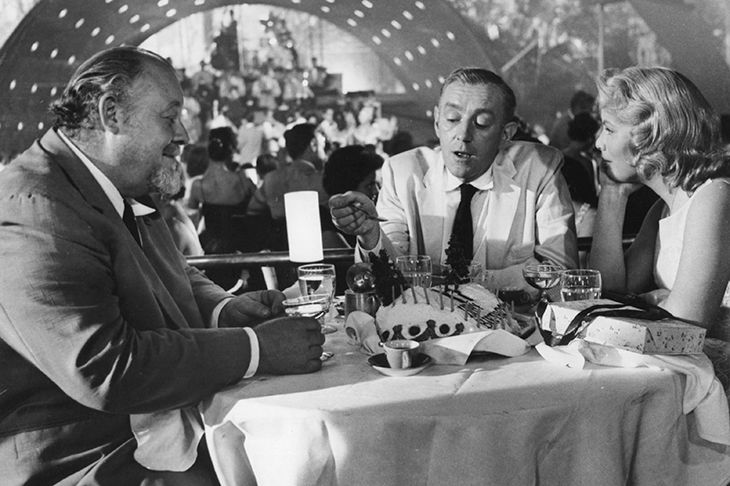Cuba meant a lot to Graham Greene. Behind his writing desk in his flat in Antibes he had a painting by the Cuban artist René Portocarrero, presented to him by Fidel Castro, who had signed his name on the back, so that Greene didn’t know which way to hang it.
Another prize possession was a tatty Penguin copy of Our Man in Havana, kept together by Sellotape, which the Russian cosmonaut Georgy Grechko had read in outer space, and in which, while circumnavigating our planet, Grechko had underlined the places in Havana that he had visited. ‘I’ve been reading it all my life, both on earth and in space,’ he wrote in his inscription when presenting the paperback to Greene in 1985. ‘I’ve learned it by heart.’
Greene’s 1958 novel, filmed soon afterwards by Carol Reed, was a satire of British foreign policy in the wake of our national humiliation over Suez — so not a world away from the situation we face today. The antithesis of the suave, womanising James Bond, who had made his debut five years earlier, James Wormold is an expatriate vacuum- cleaner salesman with a limp and an extravagant teenage daughter, whose American wife has left him.
To fund his daughter Milly’s horse-riding during the fag-end of Batista’s dictatorship, Wormold allows himself to be recruited by British Intelligence for their Caribbean network as Agent 59200 — the same number given to Greene in 1941 when SIS posted him to Sierra Leone. Frantic to impress, the austere Wormold is driven to concoct sub-agents and intelligence, finally inventing ‘big military installations under construction’ in the mountains of eastern Cuba. Back in Whitehall, the plans that he submits as proof of these, and modelled on his Atomic Pile vacuum cleaners, are hoovered up with the same gusto as Tony Blair in 2001 swallowed colour sketches of supposed biological trucks drawn by an Iraqi ‘sub-source’ codenamed Curveball.
Christopher Hull is a footslogging, down-to-earth lecturer in Spanish and Latin American studies at the University of Chester, who has written what he calls ‘the story behind a story and the story that follows the story’.







Comments
Join the debate for just £1 a month
Be part of the conversation with other Spectator readers by getting your first three months for £3.
UNLOCK ACCESS Just £1 a monthAlready a subscriber? Log in